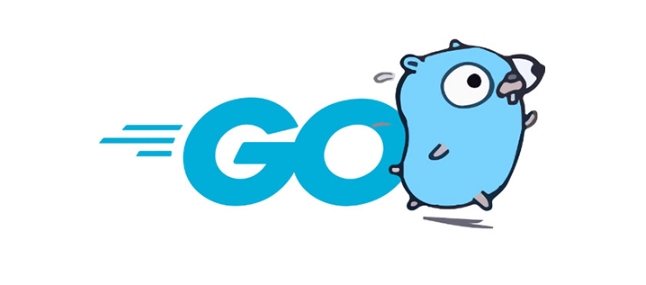How to properly initialize a golang struct with default values?
Jun 30, 2025 am 01:53 AMIn Go, structure default initialization can be achieved through constructors, nested structures, or reflections. 1. It is recommended to use a constructor starting with New to return a structure pointer with a default value to improve readability and scalability; 2. If multiple structures share fields, they can be extracted into an infrastructure and encapsulated default initialization logic to reduce duplicate code; 3. For complex scenarios, if a large number of field default values ??need to be dynamically processed, a general initialization function can be written in combination with field labels and reflections, but pay attention to performance and readability. The standard library does not directly support this function, and some third-party libraries are optional. The core is to keep the initialization logic unified and clear.

In Go, initializing default values ??for structures is not a feature that is directly supported like some other languages. You need to implement it through constructors, methods, or field assignments. If you want the structure to be instantiated automatically with the default value, you need to manually do some encapsulation.

Use the New function to set the default value
The Go community generally recommends using functions starting with New as constructors to return structure pointers with default values.

type Config struct {
Timeout time.Duration
Retries int
Debug bool
}
func NewDefaultConfig() *Config {
return &Config{
Timeout: 5 * time.Second,
Retries: 3,
Debug: false,
}
}When calling this, just:
cfg := NewDefaultConfig()
The benefits of this method are:

- Strong readability: at a glance, this is a construction method with default values
- Easy to expand: If you want to add more default configurations in the future, you only need to change this function
- Avoid duplicate code
Embed structure multiplexing default value logic
If you have multiple structures sharing part of the field, consider drawing the shared part into an infrastructure and providing it with a default initialization method.
type Base struct {
CreatedAt time.Time
UpdatedAt time.Time
}
func DefaultBase() Base {
now := time.Now()
return Base{
CreatedAt: now,
UpdatedAt: now,
}
}
type User struct {
Base
Name string
Age int
}
user := User{
Base: DefaultBase(),
Name: "Alice",
}This method is suitable for when a "template-style" structure appears in a project, and can effectively reduce duplicate initialization code.
Initialize function using field tags (optional)
For more complex scenarios, such as reading the default value from a configuration file or tag tag, a common initialization function can be implemented with the help of reflection. However, this approach is a little more complicated and can easily affect performance and code readability. It is recommended to use it only when it really requires dynamic processing of a large number of fields.
If you just want to simply support default value analysis like yaml or json tags, you can refer to the following ideas:
- Define a structure and add tag default value
- Write a general function to scan all fields
- Use reflection to set fields that are not explicitly assigned to the default value
But note: The standard library does not support directly parsing the default values ??in tags. This part needs to be implemented by yourself or with the help of a third-party library.
Basically that's it. Go does not have a built-in default value mechanism, but similar effects can be simulated well with constructors or nested structures. The key is to keep the initialization logic unified and clear, and avoid scattering codes with default value settings everywhere.
The above is the detailed content of How to properly initialize a golang struct with default values?. For more information, please follow other related articles on the PHP Chinese website!

Hot AI Tools

Undress AI Tool
Undress images for free

Undresser.AI Undress
AI-powered app for creating realistic nude photos

AI Clothes Remover
Online AI tool for removing clothes from photos.

Clothoff.io
AI clothes remover

Video Face Swap
Swap faces in any video effortlessly with our completely free AI face swap tool!

Hot Article

Hot Tools

Notepad++7.3.1
Easy-to-use and free code editor

SublimeText3 Chinese version
Chinese version, very easy to use

Zend Studio 13.0.1
Powerful PHP integrated development environment

Dreamweaver CS6
Visual web development tools

SublimeText3 Mac version
God-level code editing software (SublimeText3)

Hot Topics
 What are the implications of Go's static linking by default?
Jun 19, 2025 am 01:08 AM
What are the implications of Go's static linking by default?
Jun 19, 2025 am 01:08 AM
Go compiles the program into a standalone binary by default, the main reason is static linking. 1. Simpler deployment: no additional installation of dependency libraries, can be run directly across Linux distributions; 2. Larger binary size: Including all dependencies causes file size to increase, but can be optimized through building flags or compression tools; 3. Higher predictability and security: avoid risks brought about by changes in external library versions and enhance stability; 4. Limited operation flexibility: cannot hot update of shared libraries, and recompile and deployment are required to fix dependency vulnerabilities. These features make Go suitable for CLI tools, microservices and other scenarios, but trade-offs are needed in environments where storage is restricted or relies on centralized management.
 How do I create a buffered channel in Go? (e.g., make(chan int, 10))
Jun 20, 2025 am 01:07 AM
How do I create a buffered channel in Go? (e.g., make(chan int, 10))
Jun 20, 2025 am 01:07 AM
To create a buffer channel in Go, just specify the capacity parameters in the make function. The buffer channel allows the sending operation to temporarily store data when there is no receiver, as long as the specified capacity is not exceeded. For example, ch:=make(chanint,10) creates a buffer channel that can store up to 10 integer values; unlike unbuffered channels, data will not be blocked immediately when sending, but the data will be temporarily stored in the buffer until it is taken away by the receiver; when using it, please note: 1. The capacity setting should be reasonable to avoid memory waste or frequent blocking; 2. The buffer needs to prevent memory problems from being accumulated indefinitely in the buffer; 3. The signal can be passed by the chanstruct{} type to save resources; common scenarios include controlling the number of concurrency, producer-consumer models and differentiation
 How does Go ensure memory safety without manual memory management like in C?
Jun 19, 2025 am 01:11 AM
How does Go ensure memory safety without manual memory management like in C?
Jun 19, 2025 am 01:11 AM
Goensuresmemorysafetywithoutmanualmanagementthroughautomaticgarbagecollection,nopointerarithmetic,safeconcurrency,andruntimechecks.First,Go’sgarbagecollectorautomaticallyreclaimsunusedmemory,preventingleaksanddanglingpointers.Second,itdisallowspointe
 How can you use Go for system programming tasks?
Jun 19, 2025 am 01:10 AM
How can you use Go for system programming tasks?
Jun 19, 2025 am 01:10 AM
Go is ideal for system programming because it combines the performance of compiled languages ??such as C with the ease of use and security of modern languages. 1. In terms of file and directory operations, Go's os package supports creation, deletion, renaming and checking whether files and directories exist. Use os.ReadFile to read the entire file in one line of code, which is suitable for writing backup scripts or log processing tools; 2. In terms of process management, the exec.Command function of the os/exec package can execute external commands, capture output, set environment variables, redirect input and output flows, and control process life cycles, which are suitable for automation tools and deployment scripts; 3. In terms of network and concurrency, the net package supports TCP/UDP programming, DNS query and original sets.
 How do I call a method on a struct instance in Go?
Jun 24, 2025 pm 03:17 PM
How do I call a method on a struct instance in Go?
Jun 24, 2025 pm 03:17 PM
In Go language, calling a structure method requires first defining the structure and the method that binds the receiver, and accessing it using a point number. After defining the structure Rectangle, the method can be declared through the value receiver or the pointer receiver; 1. Use the value receiver such as func(rRectangle)Area()int and directly call it through rect.Area(); 2. If you need to modify the structure, use the pointer receiver such as func(r*Rectangle)SetWidth(...), and Go will automatically handle the conversion of pointers and values; 3. When embedding the structure, the method of embedded structure will be improved, and it can be called directly through the outer structure; 4. Go does not need to force use getter/setter,
 What are interfaces in Go, and how do I define them?
Jun 22, 2025 pm 03:41 PM
What are interfaces in Go, and how do I define them?
Jun 22, 2025 pm 03:41 PM
In Go, an interface is a type that defines behavior without specifying implementation. An interface consists of method signatures, and any type that implements these methods automatically satisfy the interface. For example, if you define a Speaker interface that contains the Speak() method, all types that implement the method can be considered Speaker. Interfaces are suitable for writing common functions, abstract implementation details, and using mock objects in testing. Defining an interface uses the interface keyword and lists method signatures, without explicitly declaring the type to implement the interface. Common use cases include logs, formatting, abstractions of different databases or services, and notification systems. For example, both Dog and Robot types can implement Speak methods and pass them to the same Anno
 How do I use string functions from the strings package in Go? (e.g., len(), strings.Contains(), strings.Index(), strings.ReplaceAll())
Jun 20, 2025 am 01:06 AM
How do I use string functions from the strings package in Go? (e.g., len(), strings.Contains(), strings.Index(), strings.ReplaceAll())
Jun 20, 2025 am 01:06 AM
In Go language, string operations are mainly implemented through strings package and built-in functions. 1.strings.Contains() is used to determine whether a string contains a substring and returns a Boolean value; 2.strings.Index() can find the location where the substring appears for the first time, and if it does not exist, it returns -1; 3.strings.ReplaceAll() can replace all matching substrings, and can also control the number of replacements through strings.Replace(); 4.len() function is used to obtain the length of the bytes of the string, but when processing Unicode, you need to pay attention to the difference between characters and bytes. These functions are often used in scenarios such as data filtering, text parsing, and string processing.
 How do I use the io package to work with input and output streams in Go?
Jun 20, 2025 am 11:25 AM
How do I use the io package to work with input and output streams in Go?
Jun 20, 2025 am 11:25 AM
TheGoiopackageprovidesinterfaceslikeReaderandWritertohandleI/Ooperationsuniformlyacrosssources.1.io.Reader'sReadmethodenablesreadingfromvarioussourcessuchasfilesorHTTPresponses.2.io.Writer'sWritemethodfacilitateswritingtodestinationslikestandardoutpu






